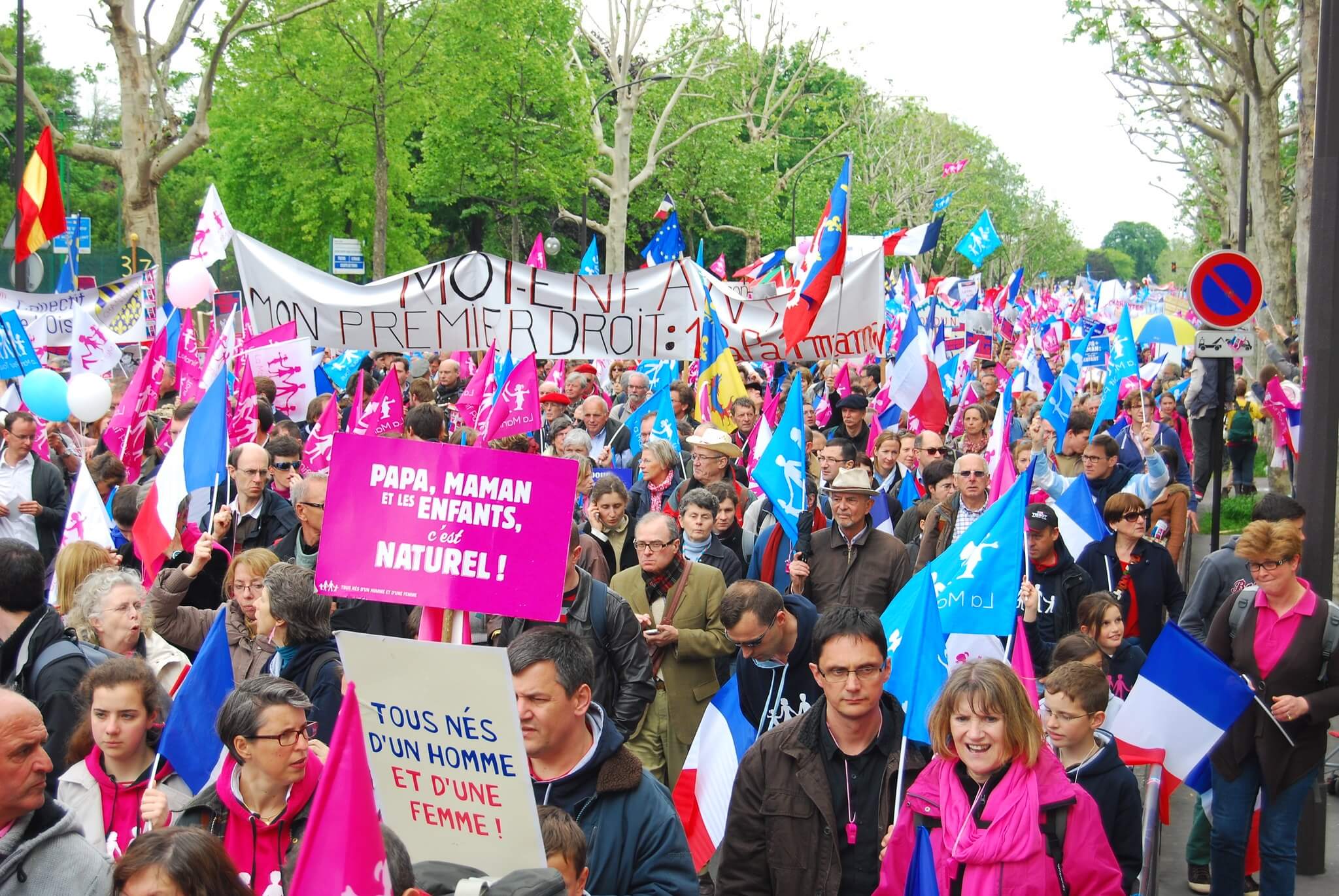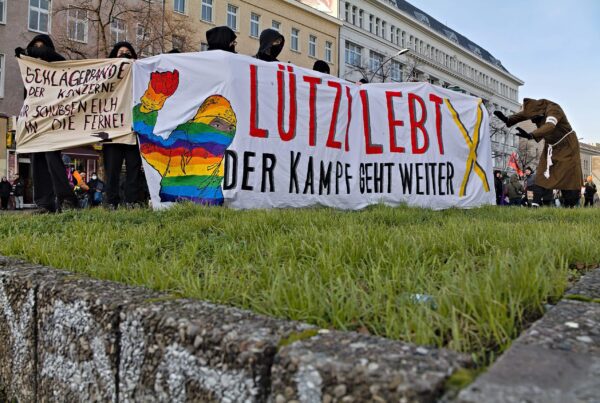This is a short reflective note on culture wars centered around seven statements. It is largely based on the introduction to the special issue of Europe-Asia Studies co-written with Sarah Whitmore and Jon Wheatley. That special issue sought to explore the phenomenon of culture wars in the former Soviet space, drawing on case studies such as Latvia, Georgia, Russia, Belarus, and Ukraine. I will draw on some of the case studies featured in that special issue in the reflection below. If there is a definitive take-away from these statement-based reflections, it is that culture wars are less about culture and more about a struggle for power over access to resources and rights among a complex of different political, social, and cultural actors, both elite and non-elite.
Culture wars are less about culture and more about a struggle for power over access to resources and rights among a complex of different political, social, and cultural actors, both elite and non-elite.
Culture wars are everywhere
At least, this is what a cursory glance of any media format, old and new, seemingly suggests. Whether it is the on-going social division in Poland regarding abortion laws, or the promotion of U.S.-style evangelical Christianity in the African continent, or the anti-gender movement across Europe which vehemently campaigns against LGBTQ+ rights, or the history wars over the interpretation of European colonization in Australia, culture wars, simply understood as polarizing battles over competing values and norms, are perceptibly ever expanding. The term ‘culture war’ is hard to avoid; it can feel like it surrounds us every day. A recent 2021 report by the Policy Institute at Kings College London and the polling company Ipsos confirms this trend. Researchers found that the number of references in British newspapers to ‘culture wars’ anywhere in the world had increased from 106 in 2015 to 808 in 2020. What the report captures acutely is how the term culture war has proliferated in the last decade as a neat label to capture contemporary social conflicts pertaining to values, morality, and identity that have seemingly become so prevalent in political discourse.
Culture wars are not new
There is a familiar narrative in most discussions on culture wars with regards to its history. Attention is drawn by historians to how in 19th-century Europe there were notable battles between secular liberal elites on the one hand and the clerical (typically Catholic) elites on the other. Those battles went on to shape the contours of politics and public life in Europe for more than a generation. This was most famously encapsulated in Otto von Bismarck’s raft of policies known as Kulturkampf (struggle of cultures) which sought to negate and suppress the influence and power of the Catholic Church in German states.
In recent decades the term culture war appeared in the 1980s and 1990s during discussions regarding the social fissures in American politics over on a range of moral issues including but not limited to gender, abortion, sexuality, education, art, and the role of religious institutions. The sociologist James Davison Hunter was the first to provide a conceptualization of a culture war and did so by distinguishing the phenomenon as a conflict between the ‘sacred’ and the ‘secular.’ Through this lens, polarization in American society was framed as a battle “between conservative ‘traditionalists’ devoted to a moral order rooted in the past and familiar social roles and mores on the one hand and progressives committed to an open and liberal society on the other.”
In the era of ‘stop the steal,’ post-truth, and QAnon, there is something almost quaint about the Christian evangelical culture wars of 1980s America. No doubt, the current moral malaise of U.S. politics has its roots in the debates and value-laden struggles Davison Hunter was writing about in the 1980s and 1990s, but today’s U.S. culture war is through the looking glass where nothing is what it seems and a collective sense of reality is almost at stake.
However, culture wars have not been isolated to the United States. The ‘globalization of culture wars’ witnessed the U.S. Christian right exporting the normative battles over ‘family values’ and sexual orientation across the world, notably in the Global South, although there were willing local groups ready to proselytize such a conservative message. The introduction of an Anti-Homosexuality Bill in Uganda in 2009 is often held up as an example of the transitional influence of the U.S. Christian right in shaping the ideational and moral politics of a country in the Global South. Since the 2010s ‘culture wars’ have gone truly transnational given their proliferation across Europe and the post-Soviet space, where conservative, traditionalist groups, actors, and organizations are pitted against progressive and liberal constituencies on a range of debates including LGBTQ+ rights, same-sex marriage, abortion, ‘traditional’ values, and migration.
Culture war is a poorly conceptualized term
Despite the increasing use of the term, there has been little considered scholarly analysis of its precise meaning and its use as an analytical concept in the United Kingdom, the United States, and beyond. The recently published special issue of Europe-Asia Studies dedicated to examining the phenomenon of culture wars in the post-Soviet space sought to unpack more precisely the conceptual usefulness of the term. The different contributions in that special issue went beyond the simple media sensationalist sloganeering of ‘culture wars’ to deepen and complicate our understanding of the phenomenon in post-Soviet countries. Too often, the term is applied to a conflict or battle over social values and morals in a dichotomous form. For Hunter, it was the battle between the ‘sacred’ and the ‘secular;’ for others, culture wars represent a battle between the ‘liberal’ and the ’illiberal’ or ‘traditionalists’ versus ‘progressives,’ or ‘somewheres’ versus ‘anywheres.’
On the surface, such binaries are useful at capturing the essence of contemporary cultural clashes, but underneath they are reductive and undermine the complexity and multiplicity of agents and relations involved. As a term, or even concept, culture war rarely has much analytical utility. It is a hard concept to operationalize. In an article I co-wrote with Liga Rudzite we sought via an analysis of Latvia’s culture war over the ratification of the Istanbul Convention[1] to delineate an analytical frame which went beyond viewing culture wars as a straightforward dichotomy. From the Latvian case we identified four elements upon which culture wars can be composed: 1) the way public discourse over cultural values is underpinned by different forms of moralization, 2) the externalization of political agency, in other words the way in which an external actor is blamed for triggering the culture war or legitimizing positions within the cultural clash, 3) how culture wars are used or instigated by elites for electoral gain or legitimation, and 4) how culture wars feature power struggles among a complex of different actors at different levels (both elite and non-elite) over the instruction or restriction of rights, resources, and values upon which society is premised.
On the surface, such binaries are useful at capturing the essence of contemporary cultural clashes, but underneath they are reductive and undermine the complexity and multiplicity of agents and relations involved.
Culture wars are multifaceted and complex
It is not controversial to suggest any social phenomenon is complex, but as the last component of the fourfold analytical frame we constructed implies, binary understandings of culture wars misses their multifaceted and complex nature. In our essay on Latvia, Liga Rudzite and myself were able to illustrate how the cultural clash over the ratification of the Istanbul Convention featured a complex of actors including politicians, parties, religious authorities, community groups, NGOs, and the general public. While these various actors were engaged in an on-going public discussion regarding whether the Istanbul Convention was unconstitutional and threatened to promote same-sex marriage and undermine so-called traditional family values, such discussions also represented a broader political struggle over maintaining or gaining access to resources (political power) or to determine what constitutes the morally acceptable bounds of who is entitled to be considered part of society.
What this demonstrates is that while the ‘domain of values’ is important to culture wars as Zora Hesová has suggested, they are more complex than these simple binaries suggest. Thus, culture wars are often about more than ‘cultural values’ they are about political struggle—they are about access to resources and power. Such an argument is not new. Neil Robinson has written on how Putin’s ‘cultural turn’ in the mid-2010s was driven by questions of political expediency and legitimacy. Likewise, in Matt Frear’s essay published in the Europe-Asia Studies special issue on the case of Belarus, both President Lukashenko and the political opposition are using homophobic discourses to advance their own interests. Similarly, in the United Kingdom, Boris Johnson’s government’s ‘war on woke,’ through policies such as protecting historical statutes relating to questionable colonial practices, or the claim to want to protect the country’s ‘cultural inheritance’ from any re-writing of the history books on the British Empire, is being driven by political expediency in the belief that it resonates with most voters. In other words, for some political elites the instigation of a culture war has great electoral advantage.
Culture wars have a moral religious dimension
While culture wars are more complex than the ‘sacred’ versus ‘secular’ dichotomy suggests, the phenomenon retains an important religious dimension. Religious morality has long characterized culture wars going back to Bismarck’s Kulturkampf, and it has been central to its contemporary manifestation. This appears most obviously in the role of religious actors and organizations who perpetuate a discourse around religious morality and values as being the appropriate basis for public policy. For example, Jon Wheatley has pointed to the way in which the Georgian Orthodox Church has become increasingly emboldened since the 1990s, spurning any reformist tendencies and adopting a more strident traditionalist discourse helping shape the politics of emerging socially conservative movements and ongoing public debates on LGBTQ+ rights and even immigration.
Likewise, Putin’s rapprochement with the Orthodox Church over the last decade has given the Russian president a broader voting coalition by appealing to the morality of the faithful. This has given the Church a greater ability to shape public policy through the promotion of ‘traditional morality’ and ‘traditional family values’ which in turn shapes public attitudes and state policies towards body politics. What these examples all illustrate is that religious moralization can underpin a great deal of discourse within a culture war. Political authorities under threat from the rise of a new liberal order seek the support of the Church and the language of religious morality to justify policy decisions which are often perceived as illiberal and are aimed at shoring up their power.
Political authorities under threat from the rise of a new liberal order seek the support of the Church and the language of religious morality to justify policy decisions which are often perceived as illiberal and are aimed at shoring up their power.
Culture wars have different causal explanations
A fault line in values between the ‘winners’ and ‘losers’ of globalization or the ‘somewheres’ and ‘anywheres’ of cultural politics.
Culture wars can be explained by both demand and supply side accounts. There has been a continuing debate as to whether the rise in populism, illiberal politics, and culture wars is driven by elites—nominally political elites—or by a ‘silent revolution in cultural values’ from below—nominally because of long-term structural changes. Contributions to our special issue reflected both these perspectives. For example, Jon Wheatley’s article on Georgia and Jasmin Dall’Agnola’s comparative essay on post-Soviet states, used polling opinion data and world values survey data respectively to demonstrate how shifts in attitudes towards globalization, ideational politics and immigration are shaping culture wars and establishing a divide between those who are at ease with the cosmopolitan character of globalization and those who are not. In other words, their findings point to a fault line in values between the ‘winners’ and ‘losers’ of globalization or the ‘somewheres’ and ‘anywheres’ of cultural politics.
As alluded to above, we should be cautious of such dichotomies. Nonetheless, while global economic inequalities may have left some constituencies behind (allowing them to retreat to reactionary and parochial identities), such a structural shift in values is also rooted in declining trust in the politicians, institutions, and organizations of the state that were originally there to create social cohesion. With public faith receding in such agents and bodies, social divisions between classes and communities have become sharper and more polarized. This is certainly the perspective from the vantage point of established liberal democracies like the United States and the United Kingdom.
At the same time, as Aurelien Mondon and Aaron Winter have argued, the shift towards social conservative values is an elite-led phenomenon where reactionary ideas have been used in the service of power. In the case of the Latvian debate over the ratification of the Istanbul Convention, the culture war was partly used by politicians and parties to achieve electoral advantage ahead of the 2018 parliamentary election. Other contributors to the Europe-Asia Studies special issue challenged the straightforward dichotomy of supply vs. demand side explanations. Jeremy Morris and Masha Garibyan, adopting an ethnographic approach to the study of the Russian ‘cultural turn,’ found that rather than Russians accepting en masse the socially conservative discourse perpetuated by elites pertaining to traditional values, homosexuality and so-called Western permissiveness, Russian public opinion was in fact highly diffuse on matters related to ‘cultural values.’ Moreover, Morris and Garibyan found in their study that their informants demonstrated agency in reappropriating the official socially conservative discourse to express their own dissatisfaction with the Russian state.
The shift towards social conservative values is an elite-led phenomenon where reactionary ideas have been used in the service of power.
Culture wars are transnational
The language, discourse, and policy of a culturally conservative morality, which typically advocates the sanctity of national borders, also traverses globally, with external agents seeking to influence the politics of states outside its borders. In the case of culture wars in the post-Soviet space, Russian actors and organizations have tended to play a considerable role in other non-Russian states. In his work on Belarus, Matt Frear noted the influence of the Russian media space in cultivating homophobic discourses in the public sphere. As such, this builds on existing scholarship which has identified Russia’s new morality politics is resonating on an international scale with religious and far right groups across Europe and even beyond.
But the influence of the Russian media and cultural space is not unidirectional. As Tatiana Zhurzhenko and Jon Wheatley noted in respect to Ukraine and Georgia, such attempts of Russian organizations and actors to shape debates pertaining to cultural values in both countries have been met with resistance. In the case of Ukraine, there has been a clear Kulturkampf policy aimed at restricting the hegemony of Russian culture in the country. But it is important not to isolate Russia as the only external agent. The Holy See has been a deeply pervasive actor in relation to culture wars in the post-communist space and, for example, sought to intervene in the discussion around the Istanbul Convention, requesting the removal of sexual orientation and gender identity as impermissible grounds for discrimination.
The Holy See has been a deeply pervasive actor in relation to culture wars in the post-communist space.
Ultimately, culture wars are transnational. Cultural clashes cut across national borders, and while it is easy to point to evangelical Christian groups proselyting against homosexuality, or Russian cultural actors and the Holy See in promoting ‘traditional’ Christian values, liberal human rights non-governmental organizations (NGOs) are also part of this equation—and have long been responsible for spreading specific liberal values pertaining to identity, rights, and morality, which have not always sat easily with some communities in recipient states. As with the multiplicity of actors and organizations involved in domestic culture wars, so it is that there can be a complex of external actors seeking to shape the narrative and discourse of cultural clashes on a transnational scale.
****
These seven statement-based reflections have sought to offer a window into analyzing at a more granular level the ways we can think and speak of culture wars. It is important that if the term ‘culture war’ is to have any analytical use beyond a simple headline grabbing slogan, it needs to be clearly operationalized. Of course, it does not need to follow what has been set out above, but there does need to be deeper consideration of the conceptualization necessary for analyzing culture wars as a specific social and political phenomenon. What the above offers is an opportunity to move beyond the surface reading of culture wars and the simple dichotomies which characterize much analysis of the phenomenon to rather see these cultural clashes as more akin to political struggles between a panoply of actors and organizations. In this way, to paraphrase Partha Chaterjee, we should always be asking whose culture war is it, and in whose interests.
[1] The Istanbul Convention is The Council of Europe Convention on preventing and combating violence against women and domestic violence.
Photo: “3ème Manif pour tous,” by novopress.info licensed under CC BY-NC-ND 2.0.







